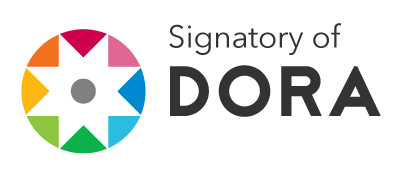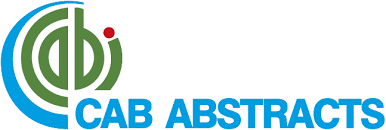First Case of Gynandromorphism in the Orchid-Bee Eulaema meriana (Olivier) (Hymenoptera: Apidae)
DOI:
https://doi.org/10.13102/sociobiology.v68i3.5778Keywords:
Gynander, deviant phenotypes, Ecuador, EuglossiniAbstract
The discovery of the first case of gynandromorphism in Eulaema meriana (Olivier) is described and illustrated. A specimen from Los Ríos, western Ecuador, discovered in the Instituto Nacional de Biodiversidad (MECN) collection, exhibits mostly male features on the left and female features on the right, except for the jugal comb of the hind wing and terminalia. This finding is compared to other reported cases in orchid bees.
Downloads
References
Botsch, J.C., Walter, S.T., Karubian, J., González, N., Dobbs, E.K. & Brosi, B.J. (2017). Impacts of forest fragmentation on orchid bee (Hymenoptera: Apidae: Euglossini) communities in the Chocó biodiversity hotspot of northwest Ecuador. Journal of Insect Conservation, 21: 633-643. doi: 10.1007/s10841-017-0006-z
Camargo, M.C. & Gonçalves, R.B. (2013). Register of a gynandromorphy of Euglossa pleosticta Dressler (Hymenoptera, Apidae). Revista Brasileira de Entomologia, 57: 424-426. doi: 10.1590/S0085-56262013005000033
Dalla Torre, K.W. & Friese, H. (1899). Die hermaphroditen und gynandromorphen Hymenopteren. Berichte des Naturwissenschaftlich medizinischen Vereins in Innsbruck, 24: 1-96.
Giangarelli, D.C. & Sofia, S.H. (2011). First record of a gynandromorph orchid bee, Euglossa iopoecila (Hymenoptera: Apidae: Euglossini). Annals of the Entomological Society of America, 104: 229-232. doi: 10.1603/AN10104
González, M. (2014). Record of a gynandromorph of Euglossa gorgonensis Cheesman, 1929 (Hymenoptera: Apidae), from Parque Nacional Natural Gorgona, Colombia. Dugesiana, 21: 77-80. doi: 10.32870/dugesiana.v21i1.4138
Hinojosa-Díaz, I.A., Gonzalez, V.H., Ayala, R., Mérida, J., Sagot, P. & Engel, M.S. (2012). New orchid and leaf-cutter bee gynandromorphs, with an updated review (Hymenoptera, Apoidea). Zoosystematic Evolution, 88: 205-214. doi: 10.1002/ zoos.201200017
López, M.F. (2018). Bioprospección del grupo Orchidaceae y su interacción con abejas colectoras de perfume Euglossini (Hymenoptera-Apidae). Revista Amazónica de Ciencia y Tecnología, 7: 132-141. Retrived from: https://revistas.proeditio.com/REVISTAMAZONICA/article/view/3339
Michener, C.D. (2007). The Bees of the World [2nd Edition]. Baltimore: Johns Hopkins University Press, xvi + [i] + 953 pp. + 20 pls.
Michez, D., Rasmont, P., Terzo, M. & Vereecken, N.J. (2009). A synthesis of gynandromorphy among wild bees (Hymenoptera: Apoidea), with an annotated description of several new cases. Annales de la Société Entomologique de France, 45: 365-375. doi: 10.1080/00379271.2009.10697621
Moure, J.S. (2000). As espécies do gênero Eulaema Lepeletier, 1841 (Hymenoptera, Apidae, Euglossinae). Acta Biologica Paranaense, 29: 1-70. doi: 10.5380/abpr.v29i0.582
Oliveira, M.L. (2007). Catálogo comentado das espécies de abelhas do gênero Eulaema Lepeletier, 1841 (Hymenoptera: Apidae). Lundiana, 8: 113-136.
Ospina-Torres, R. (1998). Revisión de la morfología genital masculina de Eulaema (Hymenoptera: Apidae). Revista de Biología Tropical, 46: 749-762.
Padrón, P.S., Roubik, D.W. & Picón, R.P. (2018). A preliminary checklist of the orchid bees (Hymenoptera: Apidae: Euglossini) of Ecuador. Psyche: A Journal of Entomology, 2018 (2678632): 14 pp. doi: 10.1155/2018/2678632
Rasmussen, C., Sánchez, E. & Skov, C. (2015). Description of a nest of Euglossa heterosticta from Peru, with taxonomic notes (Hymenoptera: Apidae). Journal of Melittology, 55: 1-8. doi: 10.17161/jom.v0i55.4963
Roubik, D.W. & Hanson, P.E. (2004). Abejas de orquídeas de la América tropical. Biología y guía de campo. Santo Domingo de Heredia: Instituto Nacional de Biodiversidad, 370p.
Roubik, D.W. (2019). Population Traits and a Female Perspective for Aglae and Exaerete, Tropical Bee Parasites (Hymenoptera, Apinae: Euglossini). Psyche: A Journal of Entomology, 2019 (4602785): 9 pp. doi: 10.1155/2019/4602785
Silveira, M.S., Peixoto, M., Martins, C.F. & Zanella, F.C.V. (2012). Gynandromorphy in Eulaema atleticana Nemésio (Apidae, Euglossini). EntomoBrasilis, 5: 238-241. doi: 10.12741/ebrasilis.v5i3.172
Suárez-Torres, A. (2019). Análisis Morfogeométrico del género Euglossa (Latreille 1802) (Apidae: Euglossini) como un aporte a su filogenia (Bachelor’s thesis), Quito: Universidad Central del Ecuador, 54 p.
Suzuki, K.M., Giangarelli, D.C., Ferreira, D.G., Frantine- Silva, W., Augusto, S.C. & Sofia, S.H. (2015). A scientific note on an anomalous diploid individual of Euglossa melanotricha (Apidae, Euglossini) with both female and male phenotypes. Apidologie, 46: 495-498. doi: 10.1007/s13592-014-0339-5
Wcislo, W.T., Gonzalez, V.H. & Arneson, L. (2004). A review of deviant phenotypes in bees in relation to brood parasitism, and a gynandromorph of Megalopta genalis (Hymenoptera: Halictidae). Journal of Natural History, 38: 1443-1457. doi: 10.1080/0022293031000155322
Yanouch, M., López, M.F. & Tobar-Suárez, F. (2018). Las abejas de las orquídeas: la tribu Euglossini (Hymenoptera, Apidae): primeros registros en el valle de los Manduriacus, cantón Cotacachi, provincia de lmbabura. Recinatur International Journal of Applied Sciences, Nature and Tourism, 1: 44-52. Retrived from: http://www.recinatur.periodikos.com.br/article/5c6edf7c0e88258a6f8e6fd6
Downloads
Published
How to Cite
Issue
Section
License
Copyright (c) 2021 Alex Pazmiño-Palomino, Marcio Luiz de Oliveira

This work is licensed under a Creative Commons Attribution 4.0 International License.
Sociobiology is a diamond open access journal which means that all content is freely available without charge to the user or his/her institution. Users are allowed to read, download, copy, distribute, print, search, or link to the full texts of the articles in this journal without asking prior permission from the publisher or the author. This is in accordance with the BOAI definition of open access.
Authors who publish with this journal agree to the following terms:
- Authors retain copyright and grant the journal right of first publication with the work simultaneously licensed under a Creative Commons Attribution License that allows others to share the work with an acknowledgement of the work's authorship and initial publication in this journal.
- Authors are able to enter into separate, additional contractual arrangements for the non-exclusive distribution of the journal's published version of the work (e.g., post it to an institutional repository or publish it in a book), with an acknowledgement of its initial publication in this journal.
- Authors are permitted and encouraged to post their work online (e.g., in institutional repositories or on their website) prior to and during the submission process, as it can lead to productive exchanges, as well as earlier and greater citation of published work (See The Effect of Open Access).



 eISSN 2447-8067
eISSN 2447-8067










